
19 Easy Japanese Books, from Novels to Manga
What is it about Japanese books that might have us laying down our weapons and waving the white flag before we hit page two?
Before you’re certain that you’ve reached the dreaded burnout stage, I’ve got the answer for your Japanese reading woes.
Here are some Japanese novels, manga, short stories and children’s stories to finally introduce you to the wonderful world of easy Japanese books!
Contents
- Easy Japanese Novels
- Easy Japanese Short Stories
- Easy Japanese Manga
- Japanese Children’s Books
- Additional Reading Tools and Resources
- Reading Tips for Japanese Novels
- And One More Thing...
Download: This blog post is available as a convenient and portable PDF that you can take anywhere. Click here to get a copy. (Download)
Easy Japanese Novels
1. “The Girl Who Leapt Through Time”
Japanese Title:「時をかける少女」(ときを かける しょうじょ)
Page Count: 238
If you’re coming to me with a rich mosaic of anime-watching under your belt, I’m thinking you might know “The Girl Who Leapt Through Time” from the anime movie of the same name.
The book by Yasutaka Tsutsui is about a bratty but pretty average female high-school student named Makoto who suddenly finds she has the ability to jump through time. It’s beautiful, tragic and oddly nostalgic.
However—the book tells the story of Makoto’s aunt who experienced a mysteriously similar phenomenon when she was in high school. Part Sci-Fi (or “SF,” as Japanese speakers say), part love story, part slice-of-life…you’ll just love this.
As a lot of the story takes place around her high school and after school at home, our narrator’s diction is pretty simple. You’ll be picking up words you can use in an everyday context (and through an adorable love story to boot!).
Bonus: Tsutsui’s also the mind behind “Paprika”…which was made into an anime movie that is…well…just take a look for yourself.

2. “Night on the Galactic Railroad”
Japanese Title:「銀河鉄道の夜」(ぎんがてつどうのよる)
Page Count: 432
It goes by many titles, but “Night on the Galactic Railroad” by Kenji Miyazawa is a popular children’s story that many of your Japanese friends have probably read.
It is about a boy named Giovanni who’s overworked from his job, school and caring for his sick mother. One night, Giovanni nearly collides with a train—however it stops before hitting Giovanni, and the student is able to board.
The train takes Giovanni through spectacular places, and during his journey, he meets many interesting people. However, it becomes clear that the passengers on the train seem to have met tragedy, hinting that the train is really a vehicle for those traveling to the afterlife.
Although the sentence structure in “Night on the Galactic Railroad” is suitable for beginners, the book has some uncommon vocabulary like “expeditions,” “galaxy,” and “fossils”. The names of the characters are also foreign, so knowing katakana is a must.
3. “God of Bears” 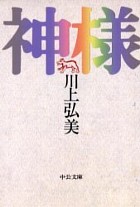
Japanese Title:「神様」(かみさま)
Page Count: 203
This story by Hiromi Kawakami is just about the most adorable story on the list. And surprisingly profound. It begins when a girl is invited out for a walk by a bear. Yes—a real bear.
He just moved into her apartment complex. And the rest of the story is all the quirky, dreamy sort of fun you’re imagining.
The language in here is pretty simple, although a few words might not be heard in everyday conversation. The tone throughout, however, should make for a cozy, non-threatening read.
4. “Heaven’s Bookstore”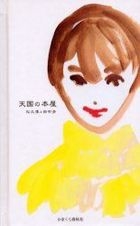
Japanese Title:「天国の本屋」(てんごくの ほんや)
Page Count: 119
This book is by Atsushi Matsuhisa. Inexplicably, a boy finds himself employed at a bookstore in…ahem…Heaven.
He’s assumed the role of substitute manager, and he’s got a new coworker with an intriguing past herself. What are they doing there? How did they get there? Are they dead? Don’t you just need to find out right now?!
The language here is pretty conversational, so it won’t be too much of a stretch to tackle a few pages!
5. “Twinkle Twinkle”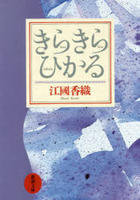
Japanese Title:「きらきらひかる」
Page Count: 213
This is an eccentric and sensitive short novel by Kaori Ekuni about a gay man (with a boyfriend) and a manic-depressive, alcoholic woman.
They enter into a sexless marriage of convenience to appease their overbearing parents—who are convinced this is the only way their children can both find happiness.
An intriguing, low-key story examining the pressure on young Japanese men and women to marry—as a mark of success in life. Again fairly simple, domestic language here. Aside from some societal discussion and some words relating to mental illness, this novel is a good starting point for breaking into Japanese reading.
Easy Japanese Short Stories
6. “After the Quake” 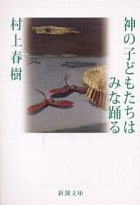
Japanese Title:「神の子どもたちはみな踊る」(かみの こどもたちは みな おどる)
Page Count: 237
I know you were just waiting for Haruki Murakami’s name to pop up on the list, but this collection of six stories is a little out-of-character for our dear surrealist.
This one’s for our ambitious, deeply curious friends who’d like to learn more about the Japanese mind through an examination of history and trauma.
Set at the time of the 1995 Kobe earthquake and the infamous Aum Shinrikyo sarin gas attacks on the Tokyo subway—these stories follow several characters as they react to and attempt to deal with the various effects that these incidents have on each of their lives. It may sound all serious, but a story called “Superfrog Saves Tokyo” can’t be all doom and gloom, can it?
As a Japanese reader mentioned on a book review forum, this one might be easier to read than Murakami’s other (highly surrealist) works, because of the more colloquial tone of the everyday people dealing with a literal “shaking up” of their worlds.
7. “Kitchen”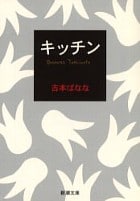
Japanese Title:「キッチン」(きっちん)
Page Count: 197
Here is another name you most likely expected to see on the list. The first of two short stories in Banana Yoshimoto’s book (a bonus if you’re looking to read more right away!), “Kitchen” follows Mikage Sakurai just after the death of the grandparents who raised her.
Finding herself alone in the house she grew up in, without the warmth and companionship of her guardians, suddenly Yuichi—a young acquaintance of her grandmother’s—appears. He and his transgender mother’s presence is soothing to Mikage…
Except for a few fancy words describing Mikage’s soul-crushing grief, the language in this book is again quite domestically focused. You’ll find reading this book is quite a calming endeavor…grab a cup of tea on a rainy day!
8. “Stories You Can Read Smoothly” 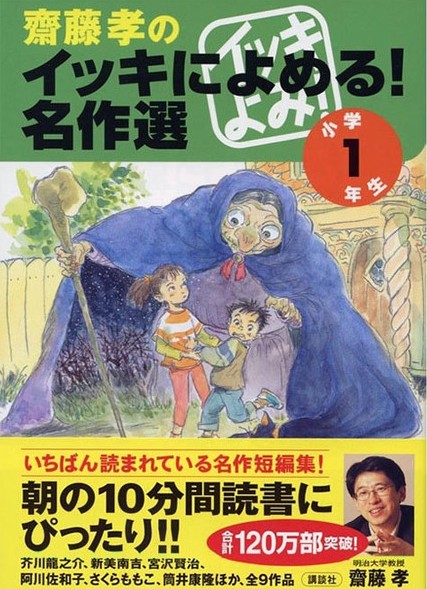
Japanese Title: 「イッキによめる!」
Page Count: 208
Illustrated by Yoshiyuki Momose (you’ll recognize his work in the Ghibli movie “Princess Mononoke”), “Stories You Can Read Smoothly” are exactly as the title reads.
The volumes are made up of short stories that should take around 15 minutes or less to read. The first volume consists of nine stories that are aimed at grade-1 readers, so any beginner should be able to pick these up and fare pretty well.
What’s really great about these books is that there’s furigana to accompany kanji (with explanations of difficult and unfamiliar words), and quizzes at the end of each story to test your knowledge and understanding of the context.
9. “Kowai!”![(Kodansha Bunko KK) red ball! Scary (2006) ISBN: 406199042X [Japanese Import] kowai japanese book cover](https://m.media-amazon.com/images/I/51ZJM0TA1QL._SL500_.jpg)
Japanese Title:「こわい!」
Page Count: 208
Challenge your mind (and your heart) with tales from “Kowai!” selected by Hiroko Reijo. Exceeding just over 200 pages, “Kowai!” (meaning “Scary!”) features short and scary stories from 15 different authors.
“Kowai!” is aimed at young readers, so there’s furigana that accompanies kanji and occasional pictures will help readers with the context of the novel.
The sentence structures aren’t too difficult to grasp, but a dictionary or grammar reference guide will definitely be useful, especially if you’re a beginner who’s still learning the basics of Japanese grammar and compound sentences.
Easy Japanese Manga
10. “Yotsuba&!”
Japanese Title:「よつばと!」
Page Count: 224
Yotsuba&! by Kiyohiko Azuma isn’t an action-packed story filled with handsome heroes and heroines, and she won’t teach you the meaning of life, but the large panels, brief text and basic grammar are great for beginners.
The manga revolves around a pigtailed toddler who seems to lack any knowledge of social etiquette, which results in some hilarious situations.
Since the scenes are set up in everyday situations, vocabulary is kept quite simple. Furigana is used to accompany all kanji, but Yotsuba’s speech bubbles are written exclusively in hiragana. This may lead to confusion for some readers, so purchasing an English copy of Yotsuba&! to use as a cross-reference might be helpful.
11. “Slam Dunk”![??? ??? 完全版 1 [Suramu Danku Kanzenban] (Slam Dunk Kanzenban, #1) slam dunk japanese manga cover](https://m.media-amazon.com/images/I/51lEzgTmaFL.jpg)
Japanese Title: 「スラムダンク」
Page Count: 234
“Slam Dunk” by Takehiko Inoue is a classic basketball-themed manga, where delinquent and gang-member Hanamichi Sakuragi winds up joining his high school basketball team to catch the eye of a girl.
The team consists of other misfits like Hanamichi. As Hanamichi recognizes his love for the sport, his team quickly gains popularity as they advance toward Japan’s all-stars.
Although Slam Dunk has furigana to accompany all kanji, there will be some parts of the manga that will be difficult for beginner readers to comprehend. This is mainly to do with its sports-themed plot, so make sure to warm up on your basketball terminology (or have a dictionary handy).
Turning to the translated version of the manga to verify that you’re understanding the context correctly can be helpful. Overall, beginners should get by fairly well. The large panels and text in the deluxe version (デラックス) will definitely help compensate.
12. Ghibli Film Comics
Japanese Title: 「ジブリフィルムコミックス」
Page Count: Around 152 per volume (up to 4 volumes per film)
Many Japanese learners and non-learners have been introduced to Studio Ghibli or Hayao Miyazaki films at one point in time.
Luckily, most of the enchanting movies have been adopted into paperback novels and colorful comics, like Japanese grammar (魔女の宅急便, まじょのたっきゅうびん), that are great for beginner readers who know basic kanji like 女 (おんな, woman) or 決 (けつ, decision).
More difficult kanji is accompanied by furigana, however since Ghibli is known for creating some other-worldly characters and situations in their stories, readers should have a dictionary handy. I’d recommend Tangorin‘s online or phone dictionary since it’s packed with diverse vocabulary.
There’s also FluentU, a video-based language learning program that has a contextual dictionary and a multimedia flashcard feature.
FluentU takes authentic videos—like music videos, movie trailers, news and inspiring talks—and turns them into personalized language learning lessons.
You can try FluentU for free for 2 weeks. Check out the website or download the iOS app or Android app.
P.S. Click here to take advantage of our current sale! (Expires at the end of this month.)

For reading, beginners would do well picking up the comic adaptations of the Ghibli movies first, as sentences are kept on the short side and there are plenty of colorful pictures to help better understand the context.
Japanese Children’s Books
13. “Guri and Gura”
Japanese Title: 「ぐりとぐら」
Page Count: 28 per book
You can find your favorite storybooks like “The Very Hungry Caterpillar” (はらぺこああむし), and even Disney tales in Japanese. The “Guri and Gura” books written by Rieko Nakagawa and illustrated by Yuriko Yamawaki, are a series of famous children’s books that have been translated into numerous languages.
They’re great for any beginner reader who wants to challenge themselves with longer sentences and new vocabulary. The situations Guri and Gura come across aren’t too unusual, so knowing normal vocabulary like snow, duck, eat and play will get you far.
14. “Buying Mittens” 
Japanese Title: 「手ぶくろを買いに」(てぶくろをかいに)
Page Count: 32
“Buying Mittens,” written by Mari Takabayashi and illustrated by Kuroi Ken, is another famous children’s story and has a simple plot and basic vocabulary.
A fox is left to face winter without mittens. In order to keep his poor paws from freezing, the fox sets out on a journey into a human village to fetch himself a pair. The text on each page may seem a bit lengthy, but the book includes furigana(some versions of the book are written entirely in hiragana) and is filled with beautiful illustrations.
Personally, I love any book by Mari Takabayashi. The illustrations are beautiful, and although her books are written entirely in hiragana, the sentences are a bit more adult-like compared to other children’s books. But the vocabulary remains easy-peasy.

15. “Japanese Folktales Read with Children”
Japanese Title:「こどもとよむ日本の昔ばなし」(こどもとよむにほんのむかしばなし)
Page Count: 48 pages per book
Children’s fables, fairytales and old folktales (昔話, むかしばなし) provide great insight into Japanese culture, as many social lessons are taught through these texts. Popular fables include Momotaro (桃太郎, ももたろ), Shitakiri Suzume (舌きり雀, したきりすずめ) and Tsuru no Ongaeshi (鶴の恩返し, つるのおんがえし).
A great set of Japanese folktales, this is a collection of twelve popular folktales, written for children by Toshio Ozawa. Since fables do tend to have some strange words, it’s best to familiarize yourself with words and phrases like,
- 昔 (むかし, olden times)
- むかしむかし (once upon a time)
- 変わる… (かわる, turn into…)
- 奇跡 (きせき, miracle)
- 勇者 (ゆうしゃ, hero/brave person)
- 鬼 (おに, demon/ogre)
- 巨人 (きょじん, giant)
- 幽霊 (ゆうれい, ghost)
- お爺さん (おじいさん, old man)*
*It seems like every-other fable includes an “old man” as a main character.
16. “Japanese Graded Readers” 
Japanese Title:「日本語多読」(にほんごたどく)
Page Count: 90 – 200 pages per volume (depending on level)
“Japanese Graded Readers” is a beautiful series of books that keeps beginners in mind. Each set of books is grouped into levels, with Level 0 being appropriate for beginners who fall into the JLPT N5 level.
The themes of each book vary from tales of passengers on a bus to guides on how to wear traditional clothing. New vocabulary is slowly introduced according to level, and furigana accompanies new kanji. Since the vocabulary is relatively simple, a beginner should be able to handle the first few books without a dictionary.
Perhaps the best part of “Japanese Graded Readers” is that each set of books comes with audio, so you can listen as a narrator reads the stories in clear, well-enunciated Japanese. This is great for anyone who’s practicing shadowing techniques.
17. “Magic Tree House” Books![Dinosaurs Before Dark / The Knight at Dawn (Magic Tree House) [In Japanese] japanese version magic tree house book cover](https://m.media-amazon.com/images/I/51yejch+icL.jpg)
Japanese Title:「マジック・ツリーハウス」
Page Count: 150 – 160 per book
The Magic Tree House books are by Mary Pope Osbourne and the Japanese versions are translated by Masako Shokuno. Plus, the Japanese versions have their own illustrations, done by Ayana Amako.
They’re packed with grammar that you’ll be introduced to as your Japanese studies continue—especially if you’re studying for any type of fluency test. The dialogue is kept on the simple side, so you’ll be able to learn natural conversational Japanese without getting lost in a sea of text.
There are a ton of books in the Magic Tree House, and each book has a different theme (think: dinosaurs or pirates). Although any new vocabulary shouldn’t be too difficult to grasp, the books are available in English to cross-reference, and the furigana that’s included will help readers look up “sword” or “haunted” pretty easily.
18. “Sadako and the Thousand Paper Cranes”![Paper cranes Sadako (war nonfiction) ISBN: 4052038177 (2013) [Japanese Import] sadako and the thousand paper cranes japanese book cover](https://m.media-amazon.com/images/I/515zEAnTQbL.jpg)
Japanese Title: 「禎子の千羽鶴」(さどこのせんばづる)
Page Count: 160
Warning: the story of “Sadako and the Thousand Paper Cranes” by Sasaki Masahiro is sad if not downright heartbreaking (I went through a thousand paper tissues reading it).
Themes include war, leukemia and hope around the making of a thousand paper cranes. Sadako’s story is very famous in Japan and is often referenced in mainstream media.
Be sure to pick up this picture book version which comes with furigana over all kanji, and grammar that won’t make your head spin.
19. Bluebird Paperbacks 
Japanese Title:「青い鳥文庫」(あおいとりぶんこ)
Page Count: 240 pages per book (depending on the series)
The publishing company Kodansha created a series of books aimed at 3-6 grade students, called Bluebird Paperbacks or Aoitori Bunko (青い鳥文庫, あおいとりぶんこ).
For example, one of the series “Here Comes the Black Witch!!” written by Hiroshi Ishizaki and illustrated by Kaori Fujita, is about Choco, a girl who ends up training as a Black Witch and attending a witch school.
If you’re looking to make the leap from a beginner to an intermediate learner, then do check out these books. Every book from Aoitori has furigana next to kanji. There are tons of books available as well, so even the biggest 本の虫 (ほんのむし, bookworm) should find the selection pretty plentiful.
Additional Reading Tools and Resources
I know how hard it is to try and dive into a jumble of characters and try to keep your head above water. So if you’re feeling on the lazier side but still want to get that daily Japanese input—behold!
It might not be about laziness either. Beginning learners can get a huge boost from using the tools and texts I’m going to share here.
Japanese parallel texts
These babies are a godsend. With the “Read Real Japanese” book series being a well-known example, you’ve got your famous Japanese short stories by the likes of Banana Yoshimoto and Haruki Murakami, but the real Japanese text is accompanied by the direct English translation and language notes on the very opposite page. So you’ll have an immediate buffer on every sentence you tackle!
A few other notable starter books like these include “Breaking into Japanese Literature” and “Short Stories in Japanese: New Penguin Parallel Text.” Find more in this post:
10 Bilingual Japanese Books for Every Language Level | FluentU Japanese Blog
Bilingual Japanese books are incredible learning tools that can help you practice your reading skills, learn new vocabulary and get exposed to various grammar structures…
V-Reader
This is an app. It’s not a perfect app, nor is it incredibly reliable, but it’s a darn good start.
V-Reader has a host of free texts by famous Japanese authors. In these texts, you can tap most of the vocabulary words on the screen to see (and hear!) the Japanese pronunciation and an English translation. Yes, it’s a little glitchy and has some trouble with given names and place names, but if you’re looking for an easy way to get your Japanese reading done, this app is your friend.
P.S. You might need to have your Japanese dictionary tag along for backup while you read.
Online stories
Too lazy to download an app? Let’s be honest, we’ve all been there. Also, memory space on your smartphone can be precious.
Just hook up your Japanese browser plugin like Rikaikun, find a short story site like Tom Ray’s here and explore the endless bounty of the Internet with your little kanji helper. Take a look at a more in-depth guide here on how to turn anything into a Japanese reader.
Reading Tips for Japanese Novels
Pace yourself—set a reading goal
Reading in another language (especially a character language) can be very taxing! The best way to keep you from sending that book sailing and resorting to a Netflix binge is to set a reading goal.
- Newbie/Busy Readers: Start with just 2-3 pages…trust me. That’s a lot of new vocabulary.
- Intermediate Readers: Try for 5-6 pages in the beginning.
- Seasoned Readers: Go ahead and study a good 15-20 pages before calling it a day.
Even if you can only put in 20 minutes of reading practice, reading a few pages is better for your language goals than nothing at all!
Set a goal, collect a decent amount of new vocabulary, read aloud to yourself for speaking practice, and then stop. It’ll feel much better than plugging away until you burn out.
Keep a dictionary handy…but don’t use it as a crutch
Let’s be honest—you’re not getting very far without a dictionary. You’ll hit that first unknown kanji like a brick wall in the middle of your potentially beautiful sentence.
Your best bet is to try a mobile dictionary app like imiwa? which can sometimes be more reliable than Google Translate for specific vocabulary words. Better yet, with imiwa? you can look up the kanji by stroke number and radical—if you don’t know the meaning of that kanji, chances are you won’t know how to pronounce it either!
That said, make sure you’re not stopping every single time you find an unknown kanji—this will only cause frustration. Get an idea of what the sentence is about using the words you know, and see if you can guess the meaning from the context. If you can’t get past the first sentence without breaking out the dictionary, you might want to scale back on the reading level.
Add new words to flashcards and vocab lists for review
Okay, so I may have spoken too soon about Google Translate.
Want a great hack for making vocab lists?
Using the computer browser version of Google Translate, make sure you “star” every vocab word you look up while reading. It’ll then automatically put together a little vocab list, which you’ll find hiding on the right side of the screen.
What’s even more awesome is you can actually export this list into Google Sheets (online Excel) right from Google Translate, have all the vocab organized on a spreadsheet and order the list alphabetically by Japanese character! And if that’s not how you like to study—you can always keep the order you looked them up, review them all and then reread the pages you found them in.
More of a flashcard sort of learner? Check out some of the best apps to study this way. With Anki, you can just straight up create your own deck, adding words from your novel every time you have to look one up. Completely custom!
Feeling a little more motivated? I hope so!
And now, armed with a few good reads, a good dictionary app and some personalized flashcards, no matter whether you’re lazy or gung-ho, you’re ready for battle!
Download: This blog post is available as a convenient and portable PDF that you can take anywhere. Click here to get a copy. (Download)
And One More Thing...
If you love learning Japanese with authentic materials, then I should also tell you more about FluentU.
FluentU naturally and gradually eases you into learning Japanese language and culture. You'll learn real Japanese as it's spoken in real life.
FluentU has a broad range of contemporary videos as you'll see below:

FluentU makes these native Japanese videos approachable through interactive transcripts. Tap on any word to look it up instantly.

All definitions have multiple examples, and they're written for Japanese learners like you. Tap to add words you'd like to review to a vocab list.

And FluentU has a learn mode which turns every video into a language learning lesson. You can always swipe left or right to see more examples.

The best part? FluentU keeps track of your vocabulary, and gives you extra practice with difficult words. It'll even remind you when it’s time to review what you’ve learned. You'll have a 100% personalized experience.
Start using the FluentU website on your computer or tablet or, better yet, download the FluentU app from the iTunes or Google Play store. Click here to take advantage of our current sale! (Expires at the end of this month.)


